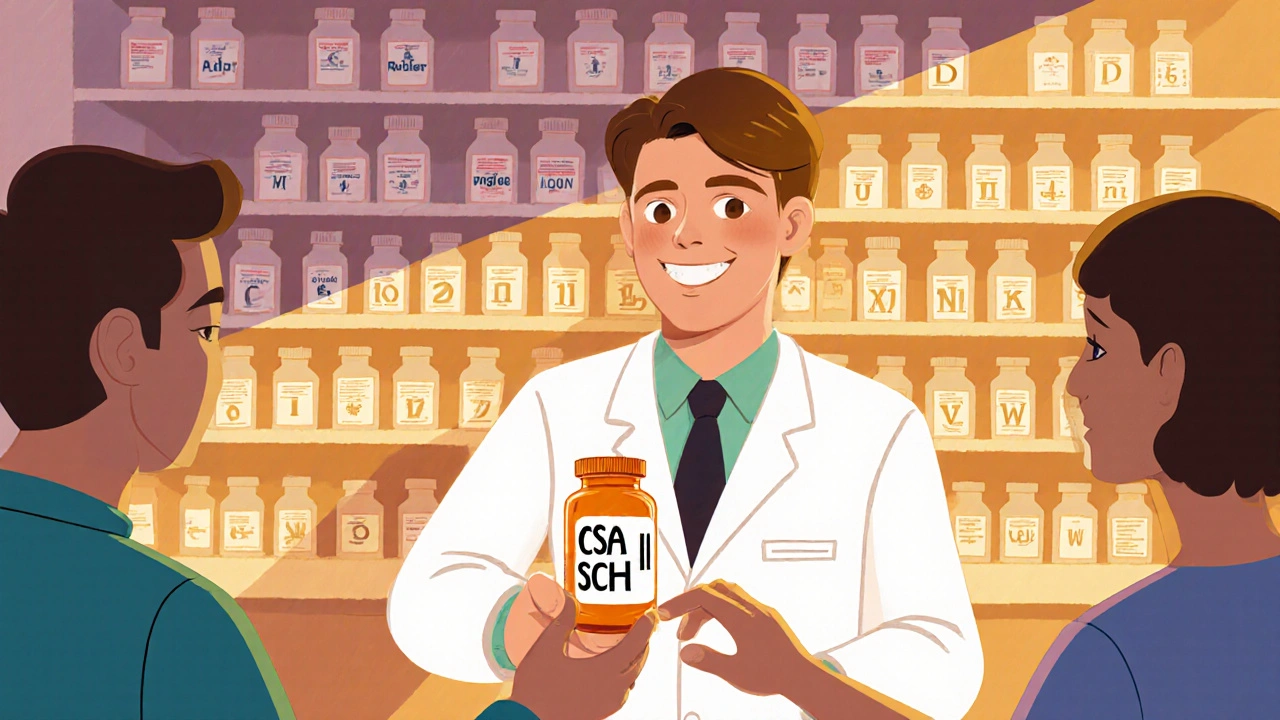DEA Schedule Codes: What They Mean and How They Affect Your Medications
When you pick up a prescription for something like oxycodone, Adderall, or even a strong anti-anxiety pill, the pharmacist might check a list you never see. That’s because those drugs are classified under DEA schedule codes, a system created by the U.S. Drug Enforcement Administration to categorize drugs based on their potential for abuse and medical use. Also known as controlled substance schedules, this system decides who can prescribe them, how many refills you get, and whether you can even order them online without a special permit. It’s not just bureaucracy—it directly affects what meds you can get, how fast, and under what rules.
These codes range from Schedule I to Schedule V, and each level tells a story. Schedule I drugs like heroin or LSD have no accepted medical use and are illegal everywhere. But most of the drugs you actually encounter fall into Schedules II through V. Schedule II, includes powerful painkillers like oxycodone, fentanyl, and stimulants like Adderall. These drugs carry a high risk of addiction, so prescriptions are strictly limited—no refills, no phone orders, and often a paper copy is required. Schedule III, covers drugs like ketamine and certain steroid combinations. They still have abuse potential but less than Schedule II, so refills are allowed up to five times in six months. Then come Schedule IV drugs like Xanax and Ambien—commonly prescribed for anxiety and sleep, with lower addiction risk. And Schedule V? That’s the lowest tier, with cough syrups containing tiny amounts of codeine or antidiarrheals with limited narcotics.
Why does this matter to you? Because if your doctor switches your painkiller from one brand to a generic, or tries to refill your anxiety med early, it’s often the DEA schedule that’s blocking the action—not the pharmacy being difficult. The same goes for buying medications online. Sites that sell Schedule II or III drugs without a valid prescription are breaking federal law. That’s why legitimate pharmacies like MyPharmacy-Online require a real prescription for every controlled substance. Even if a site claims to offer "cheap OxyContin," if it skips the DEA rules, it’s not just unsafe—it’s illegal.
You’ll also see how these schedules show up in the posts below. Articles on apixaban and naloxone don’t fall under DEA schedules because they’re not addictive, but drugs like hydrocodone, tramadol, or even benzodiazepines do. You’ll find posts explaining why some pain meds are harder to refill, why certain ADHD drugs need special paperwork, and how doctors navigate these rules to keep patients safe. Whether you’re managing chronic pain, dealing with mental health meds, or just wondering why your prescription feels so restricted, understanding DEA schedule codes gives you real power. You’re not just a patient—you’re someone who can ask the right questions, spot red flags, and make smarter choices about your care.

Understanding Controlled Substance Labels and Schedule Codes: What You Need to Know
Learn how DEA schedule codes on prescription labels determine refill rules, legal restrictions, and risk levels for controlled substances like opioids, benzodiazepines, and cough syrups. Understand what Schedule II, III, IV, and V really mean for your care.
Categories
- Medications (41)
- Health and Medicine (40)
- Health and Wellness (34)
- Online Pharmacy Guides (15)
- Nutrition and Supplements (7)
- Parenting and Family (3)
- Environment and Conservation (2)
- healthcare (1)
- prescription savings (1)
Popular Articles



